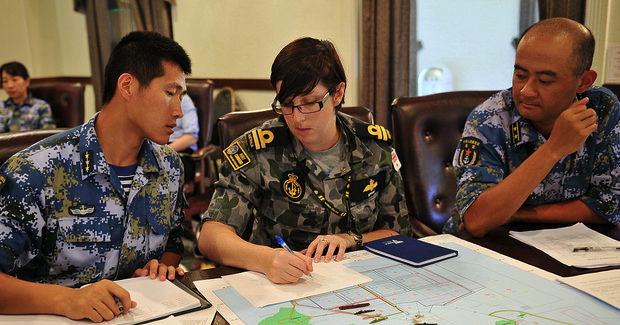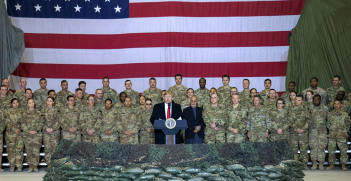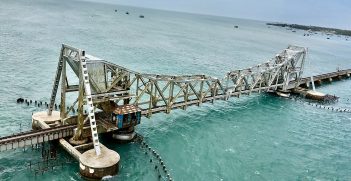Building Stronger Indo-Pacific Partnerships

Regional partnerships across the Indo-Pacific are commonly viewed as a way for Australia to pursue its objectives of security, prosperity and growth. So what are some lessons, best practices and opportunities that might help Australia construct stronger partnerships in this strategically important part of the world?
Partnerships allow Australia to exert its influence and project its global and regional interests by working more closely with others. However, there are a number of things that work and don’t work when initiating partnerships. Identifying these allows for a more effective approach to strengthening regional cooperation.
Issues of common interest
Identify issues common to all and pursue a dialogue, but also allow that dialogue to move into areas to avail of new opportunities.
It is important to find common ground and identify the most pertinent issues on which countries are aligned. Humanitarian assistance, disaster relief, having a common maritime surveillance picture, and countering piracy, illegal fishing and illegal trafficking are all examples of such topics.
Every country in this region has and will continue to experience natural disasters, will have to counter piracy and illicit trafficking, and all of them have key lessons that should be captured, shared, and ultimately, learned. These lessons can be incorporated into existing national security level plans and strategies, regional strategies, and future security cooperation activities.
It’s also important in my view to explore opportunities for new topics—in other words, pursue a dynamic, not a static, agenda.
Beyond traditional national security and trade topics, there may well be openings to discuss partnerships around other topics, such as emerging technologies, cyber policy, innovation, energy sector reform, and smart cities. Obviously, delving into these areas requires a whole of government approach from Australia.
Offer assistance
Offering capacity-building assistance that partners need and can absorb is important, as is talking about the intended applications of the assistance that is to be provided.
It is important to ensure that the assistance and capabilities provided to partner countries in the region are appropriate. It means that the countries can actually absorb these capabilities and are, to the furthest extent possible, interoperable with their neighbours.
Basic equipment and training should be provided first, followed by more sophisticated training and equipment, such as portal monitors; and then other types of intelligence, surveillance and reconnaissance equipment.
All capabilities should include a plan for resourcing sustainment. From my research in the US, sustainment is often not factored in to the discussions or the assistance packages.
It is also useful to have focused discussions around the intended use of the capabilities before they are provided. Each partner may have very different ideas about how they intend to use the capabilities. This might be perfectly fine, but this understanding should be transparent.
The bigger picture
Ensure those delivering assistance and implementing activities understand the broader strategic context of their mission and are asking questions about additional needs and capability gaps.
Too often, teams are deployed to build capacity but they aren’t fully aware of how their activities fit into the broader picture of the partnership that is being built.
This is a critical aspect of partnership building, and requires that everyone have an understanding of the purpose of the activity they are delivering. How do they build upon prior activities? What gaps are they filling?
Also, in many cases partner countries have basic requirements that aren’t known or explored. I believe that assistance in institution-building should always be on offer—areas like logistics reform, budgeting/resource management, strategy and planning, personnel management and professional education and training. Australia, the US, UK, Japan and others, should always be looking for opportunities to assist others in these critical areas.
Be sensitive
Consider the method by which any capacity-building assistance is delivered.
Are the right departments represented? Is the right expertise available? Is the training, for example, delivered by active duty military or police professionals? Or a contractor? It matters, depending on the culture. Wearing the uniform (or not) can make a big difference in my experience for military and police training activities.
Also, what is the appropriate length for the deployment to build the relationship and the overall partnership? Should it be a matter of years, months, weeks or days? Building trust can take a long time. The Pacific Maritime Security Program seems to have this right. They send several staff—typically a junior officer and an NCO (non-commissioned officer) trainer—on long-term deployments and work directly with the partner nation on a topic that is of direct concern to them such as countering illegal fishing.
Regional ownership
Look for opportunities to offer projects for others to lead wherever possible and appropriate.
Regional ownership is important. The US and Australia don’t always have to run all efforts over the long term.
An example that springs to mind is the Combined Maritime Forces (CMF) model in Bahrain. It’s an operationally-focused model aimed at countering terrorism and piracy, as well as enhancing regional cooperation and enabling safe maritime transit. They operate partly in contested waters. The CMF has lots of partners, including the US, UK, Australia, Thailand, Singapore, as well as many from within the Middle East. It may be worth looking at this model for the greater Indo-Pacific. Australia could take the lead and then rotate the leadership to other partner countries in the region.
Cooperate thoughtfully
Where possible, allies should more closely coordinate, deconflict, and together identify gaps in their capacity-building activities with third countries.
Often, assistance isn’t necessarily coordinated at the event level among allies in the Indo-Pacific region. Allies may share some plans and priorities, but I think there are opportunities to build and capitalise on each other’s experiences.
To take this a step further, another approach to pursue is to more actively and deliberately share strategies and plans. This would allow for greater coordination and capacity-building assistance that can then be used to identify and fill gaps, and to avoid duplicative efforts.
An example of this might be simple, like sharing key leader talking points ahead of time. Or, more involved, such as building upon each other’s activities, where for example, the US or Australia might do some training in country X, and Japan might validate that training in a planned exercise.
Robust evaluation processes
Implement more robust evaluation approaches to learn lessons and make improvements.
We should think about innovative ways to evaluate progress in new and existing partnership efforts. Too frequently, not enough thought is given to evaluations of programs, activities and their intended impact.
Key elements of such an evaluation framework would include developing SMART objectives, establishing key milestones, identifying indicators of success and benchmarking. This would allow for the collected data to be used to make informed decisions about whether to continue, cut or alter a given initiative based on evidence.
Overall, I feel that a key to success for improving Australia’s security in the region is to develop partnership models that integrate strategy, planning, resources and sound evaluation approaches. Lessons can then be learned from prior efforts. This approach will allow Australia to be transparent and effective in its quest to develop and deepen existing partnerships in the Indo-Pacific region and beyond.
Dr Jennifer Moroney is the director of RAND Australia, based in Canberra.
This article is based on Dr Moroney’s address to the 2016 AIIA National Conference. The assessment was also discussed at greater length during the ANU’s 2016 Indo-Pacific Maritime Security Conference. Report available here.




